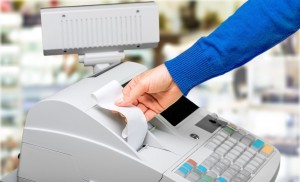Receipt paper is a commonly used material in everyday transactions, but many people wonder if it can be recycled. In short, the answer is yes, receipt paper can be recycled, but there are some limitations and considerations to remember.
Receipt paper is usually made from thermal paper, which contains a layer of BPA or BPS that causes it to change color when heated. This chemical coating can make receipt paper difficult to recycle because it contaminates the recycling process and makes it less efficient.
However, many recycling facilities have found ways to effectively recycle receipt paper. The first step is to separate thermal paper from other types of paper, as it requires a different recycling process. After separation, the thermal paper can be sent to specialized facilities with the technology to remove BPA or BPS coatings.
It’s worth noting that not all recycling facilities are equipped to handle receipt paper, so be sure to check with your local recycling program to see if they accept receipt paper. Some facilities may have specific guidelines on how to prepare receipt paper for recycling, such as removing any plastic or metal parts before placing it in the recycling bin.
If recycling is not possible, there are other ways to dispose of receipt paper. Some businesses and consumers choose to shred receipt paper and compost it because the heat generated during the composting process can break down the BPA or BPS coating. This method is not as common as recycling, but it can be a viable option for those looking to reduce their impact on the environment.
In addition to recycling and composting, some businesses are exploring digital alternatives to traditional receipt paper. Digital receipts, typically sent via email or text message, completely eliminate the need for physical paper. Not only does this reduce paper waste, it also provides customers with a convenient and neat way to track their purchases.
While receipt paper recycling and disposal is an important consideration, it’s also worth looking into the environmental impact of thermal paper production and use. The chemicals used in the production of thermal paper, as well as the energy and resources required to make it, affect its overall carbon footprint.
As consumers, we can make a difference by choosing to limit the use of receipt paper as much as possible. Opting for digital receipts, saying no to unnecessary receipts, and reusing receipt paper for notes or checklists are just a few ways to reduce our reliance on thermal paper.
In summary, receipt paper can be recycled, but it requires special handling because it contains a BPA or BPS coating. Many recycling facilities have the capacity to process receipt paper, and there are alternative disposal methods such as composting. As consumers, we can help reduce the environmental impact of receipt paper by choosing digital alternatives and being mindful of paper use. By working together, we can have a positive impact on the environment and contribute to a more sustainable future.
Post time: Jan-06-2024



